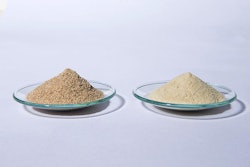
Last week, we discussed that savings as low as USD$1 can bring about large savings in feed formuation when seen from a different perspective. The devil’s advocate would reason that animal diets formulated on a least-cost principle are already as cheap as possible. After all, this is the reason why we still use the least-cost formulation systems worldwide. And here lies one of the greatest myths in animal nutrition: least-cost formulas can be very expensive. Let me explain.
Least-cost formulas can be very expensive. Let me explain.
A least-cost formulation computer program is nothing but a rapid way to solve a multifactorial system of algebra equations with at least as many unknowns as equations. If this reminds you of high school algebra, you are correct. It is just the enormous size of these equations and their great number that require the power of a computer to get to a quick solution. And, perhaps you might recall, there are many solutions when the number of equations and unknowns are not equal. One of these solutions meets the requirement of least cost. Here ends its purpose any feed formulation system!
But, like any sausage machine, the end result can be only as good as the meat we feed it — pun intended! There are four areas where incorrect entry data will cause the system to balance on a higher-than-needed end price:
- Ingredient prices are not current. Most use purchase prices, but some of the best formulators recommend using replacement prices. There is a huge difference in annual costs as more expensive ingredients tend to be used less.
- Ingredient composition is not estimated correctly, despite laboratory tests or NIR analyses, especially when table values are used without ever running a complete feed analysis to get a rough estimate of accuracy.
- Nutrient specifications are overgenerous or incorrect, resulting in wasted nutrients or lost animal performance potential. Matching animal needs with feed specifications requires a farm-specific challenge test.
- Ingredient minimum and maximum allowances are not estimated correctly, resulting in lost opportunities or lost animal performance. Here lies also the area of additives where overuse is the norm.
A final point that requires the experienced eye of a veteran formulator is challenging formulation pressure points. If the above four simple — but vast in importance — aspects of feed formulation are difficult to teach in universities and colleges, then handling pressure points must appear impossible to teach. Yet, it only requires experience and courage to see what happens when something considered impossible is attempted.

















